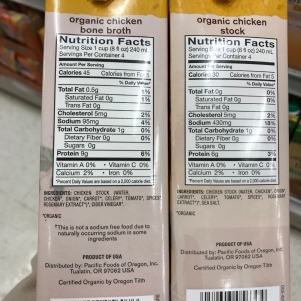[Warning. In some places, the following post may be describing illegal activities. Please do not engage in these activities unless they are legal in your current jurisdiction. And don’t call the cops on me, neither!]
Have you ever wanted to make bathtub moonshine? Me neither. But, I have always wanted to jack some cider.
By “jack” I am talking about the process of freeze distillation. With freeze distillation, I can leverage the different freezing points between alcohol (-114ºC) and water (0ºC) to separate the water-containing parts from the alcohol-containing parts of liquids. In this case, I am using Citizen Cider Unified Press and Champlain Orchards Original. With freeze distillation, I can take these semi-sweet ciders with around 5% ABV, and hopefully increase the sugar and alcohol content up to 40% ABV.
Note. This is illegal, as best as I can tell. New Hampshire does not have a law allowing home distillation but there has been much discussion around a proposed bill in the legislature to allow home distillation. And, there is controversy whether freeze distillation is actually distillation. Without fine control, I am not separating out methanol from ethanol, etc, but merely concentrating the cider by removing water. Either way, hairs are being split and I’m being a lawbreaker here…
Sunday, I got a bee in my bonnet and decided to take advantage of the -27ºC forecasted low temperature to jack some good cider on my back porch. 
I started out with approximately 120 oz of Citizen Cider, and about 90oz of Champlain Orchard. I kept back a little of the original cider for a taste test. I chose these two ciders because they were the sweetest ciders available at my COOP. I knew that jacking dry cider was a bad, bad, idea… sweeter the better. I decanted the cider into plastic food-safe jugs, shook the hell out of them to release as much of the effervescence as possible, and stuck them out on the porch to freeze. Starting temperature, -12ºC. They froze for 18 hours on the porch overnight Sunday, then came into the house on Monday morning to wait for my workday to wrap up.

On Monday, the first freeze distillation iteration. Separating out the concentrate from the water is as simple as upending the jugs over a mason jar and catching the slow drip of concentrate. It took about an hour to drip out all of the concentrate, leaving mostly white ice inside the jugs. On the left is the Citizen and the right is Champlain. Ultimately, I ended up with a volume of about 72 oz of Citizen and 56 oz of Champlain. Overall that is a 62% of the starting volume of the Champlain, and 60% of the starting volume of the Citizen. Again, I saved 2 ounces of step 2 for taste testing later. I put the first reductions back into the food-safe plastic jugs and froze it again overnight. This time, unfortunately, it went into my freezer (set to -22ºC) because the forecast predicted a low of “only” -13.3ºC overnight.

On Tuesday, after two iterations, I am at the final Applejack. Like before, I upended the jugs on top of mason jars and let it drip down for about an hour. For the Citizen, I had a final volume of 22oz, and for the Champlain, about 16oz, for a total reduction of 18% of the starting volume remaining for both ciders.


The final product for both ciders was crystal clear and much darker in color than the starting product. The effervescence in the Citizen was still a little present in the first distillation, but by the second was completely gone. The pictures above show (l to R) the original packaging, the original product, the first concentrate and the final applejack (total volume shown).
Sam and I tasted the original product, as well as the v1 distillate and the final applejack. The Champlain did not come out well. The initial cider was tart and the distillation process ended up with a harsh, metallic taste with overly tart, almost bitterness. Not good. I threw a big spoon full of my vinegar mother into it, stuck it in the back of my fermenting corner, and hope to get some rocking good apple cider vinegar. Yuck. Lemons into lemonade.
The Citizen, on the other hand, was a resounding success. I think the final product is much better than the starting cider. Citizen has a complexity, a funkyness, to their cider, that carried through nicely into the applejack. I would love to have a hydrometer right now to evaluate the ABV of the final products. However, given the very long legs on both, I suspect we hit at least 20% ABV.
Oh, come on! High school chemistry. I should be able to do this math.
ABV is just alcohol per volume. So 5% ABV means there is 5 oz of alcohol for every 100 oz of total liquid. Right? If that’s the case, then I think I can do the math. However, I have to assume that, in the freeze distillation process, I didn’t loose any alcohol in the precipitant (the ice). I don’t know if that is a reasonable assumption, but if I did loose alcohol, I think it would mean that my calculations are underestimates, not overestimates. Let’s try it!
The Citizen was labeled as 5.3% ABV and I started with about 120oz. That means there was 6.4 oz of alcohol. If I kept ALL of that alcohol, then the final product would have 6.4 oz of alcohol in the reduced volume of 22oz of total liquid, or 29% ABV. I hope Nick Scheeler is reading this and can correct my math if I am wrong here.
By this math, the Champlain started at 5.0% ABV of 90 oz, or 4.5 oz alcohol. Then, the final 16oz would have 28% ABV.
When are we having get together to taste the Citizen Applejack? It’s illegal to make it, not to drink it!




















